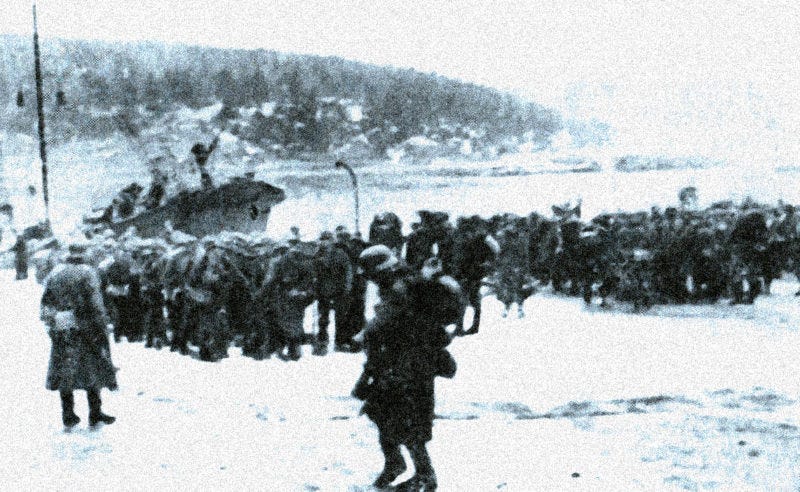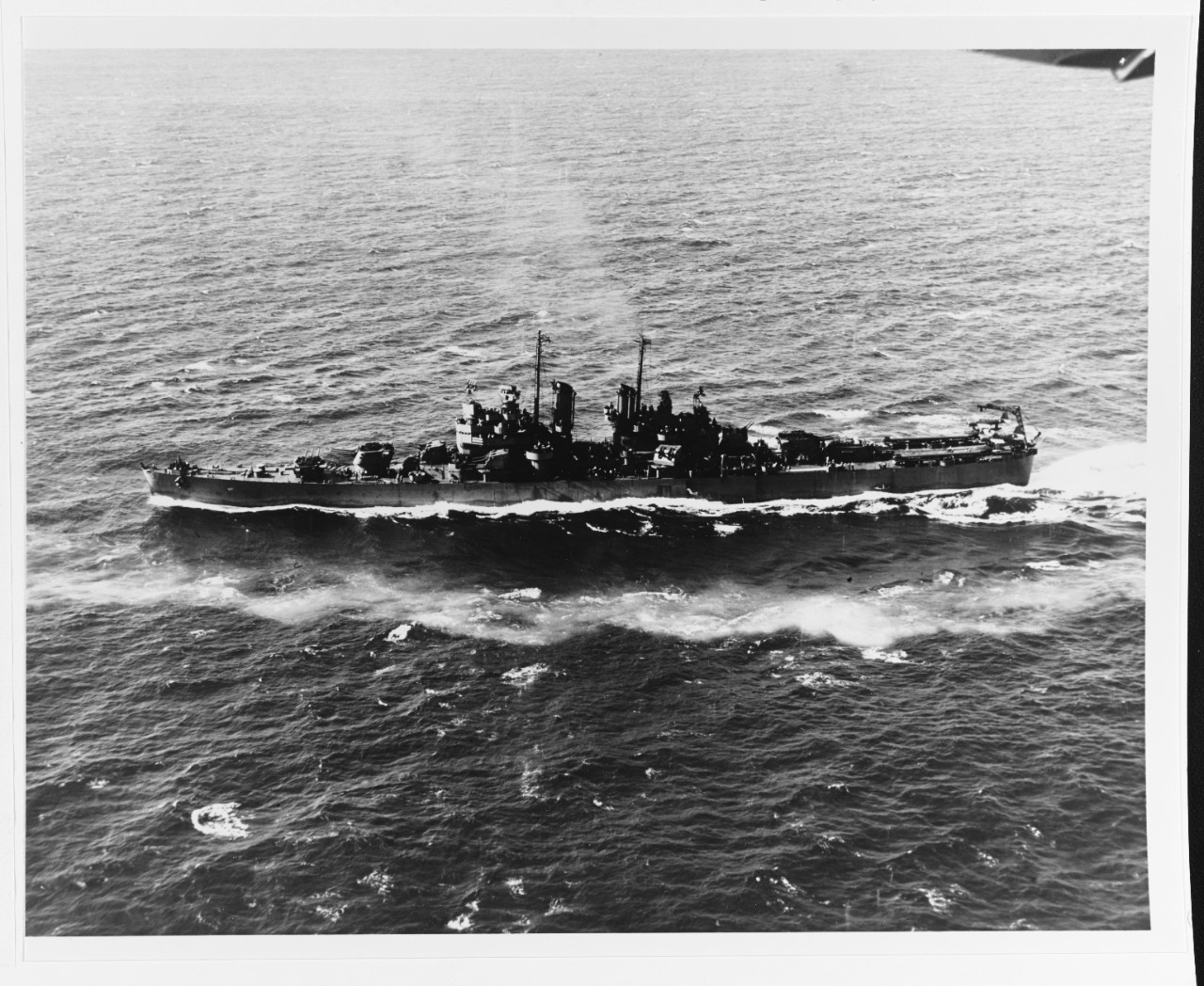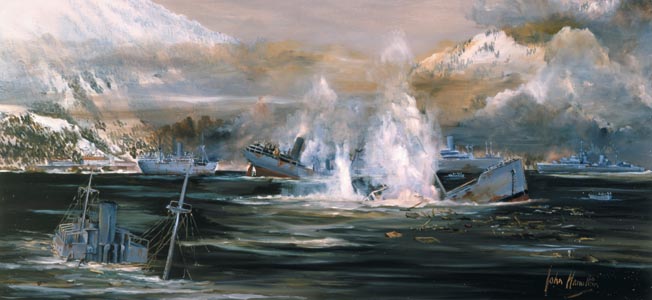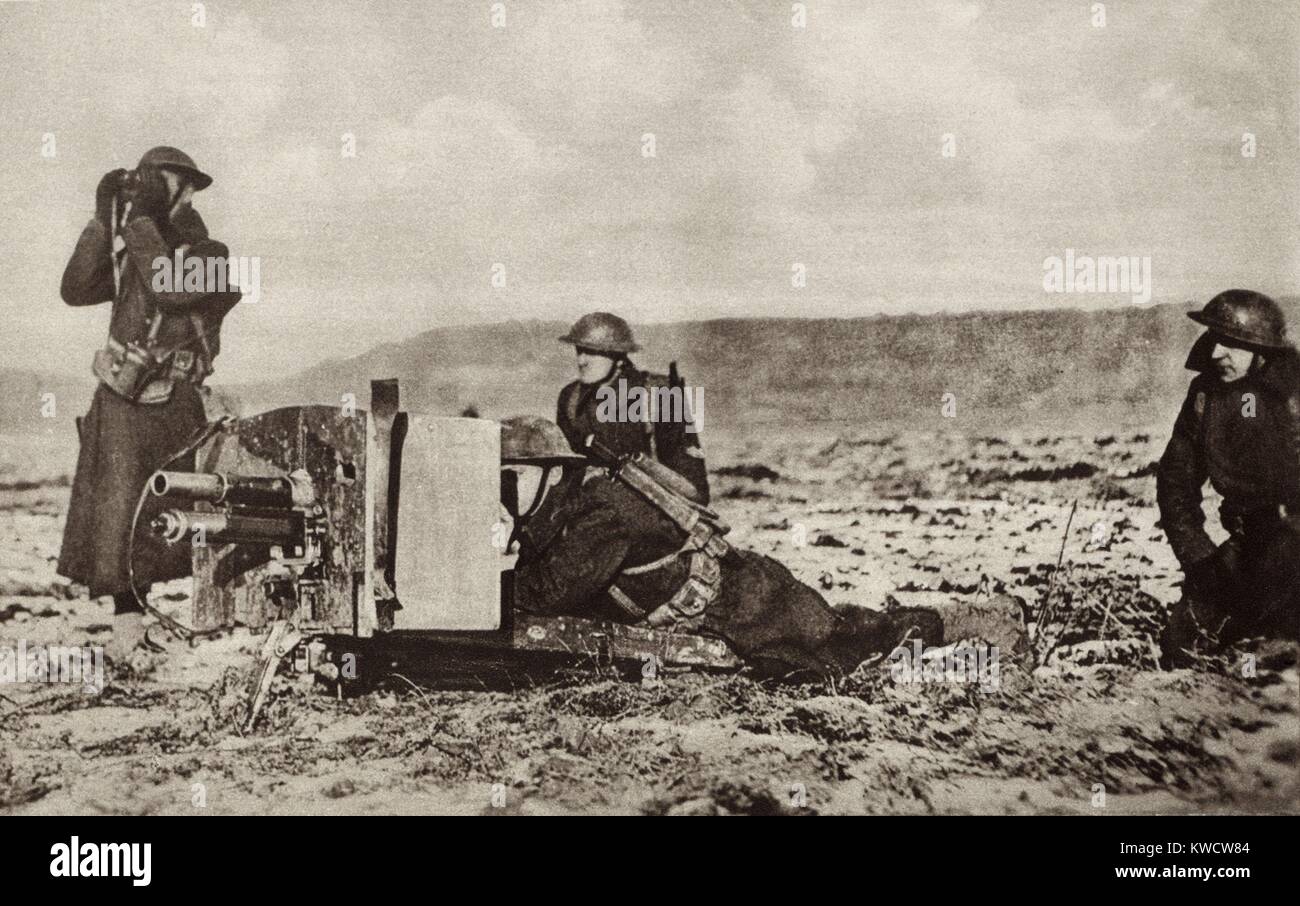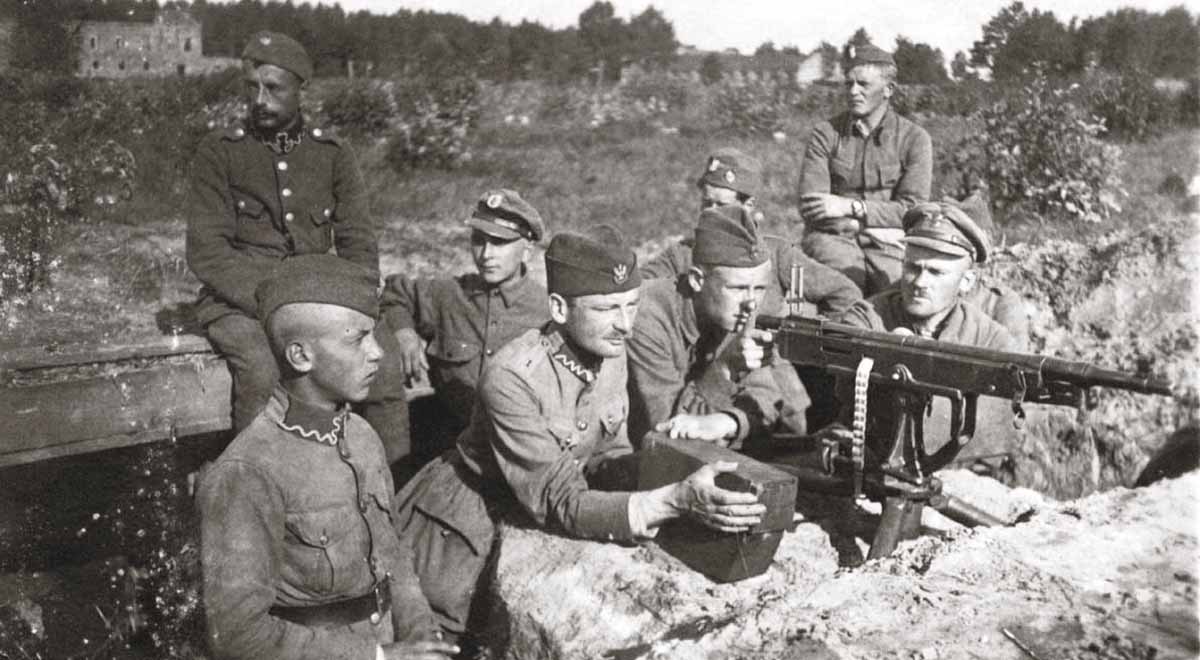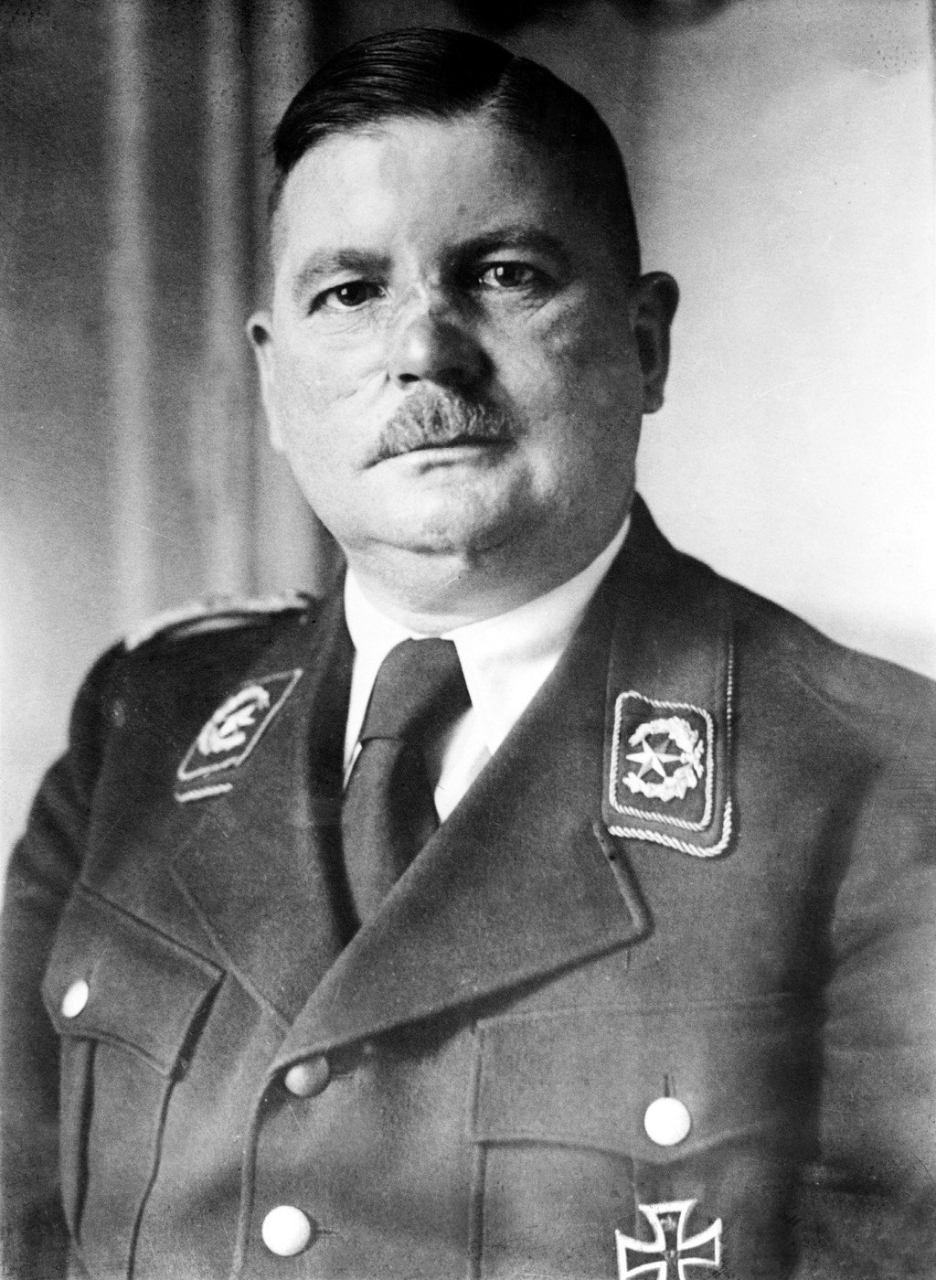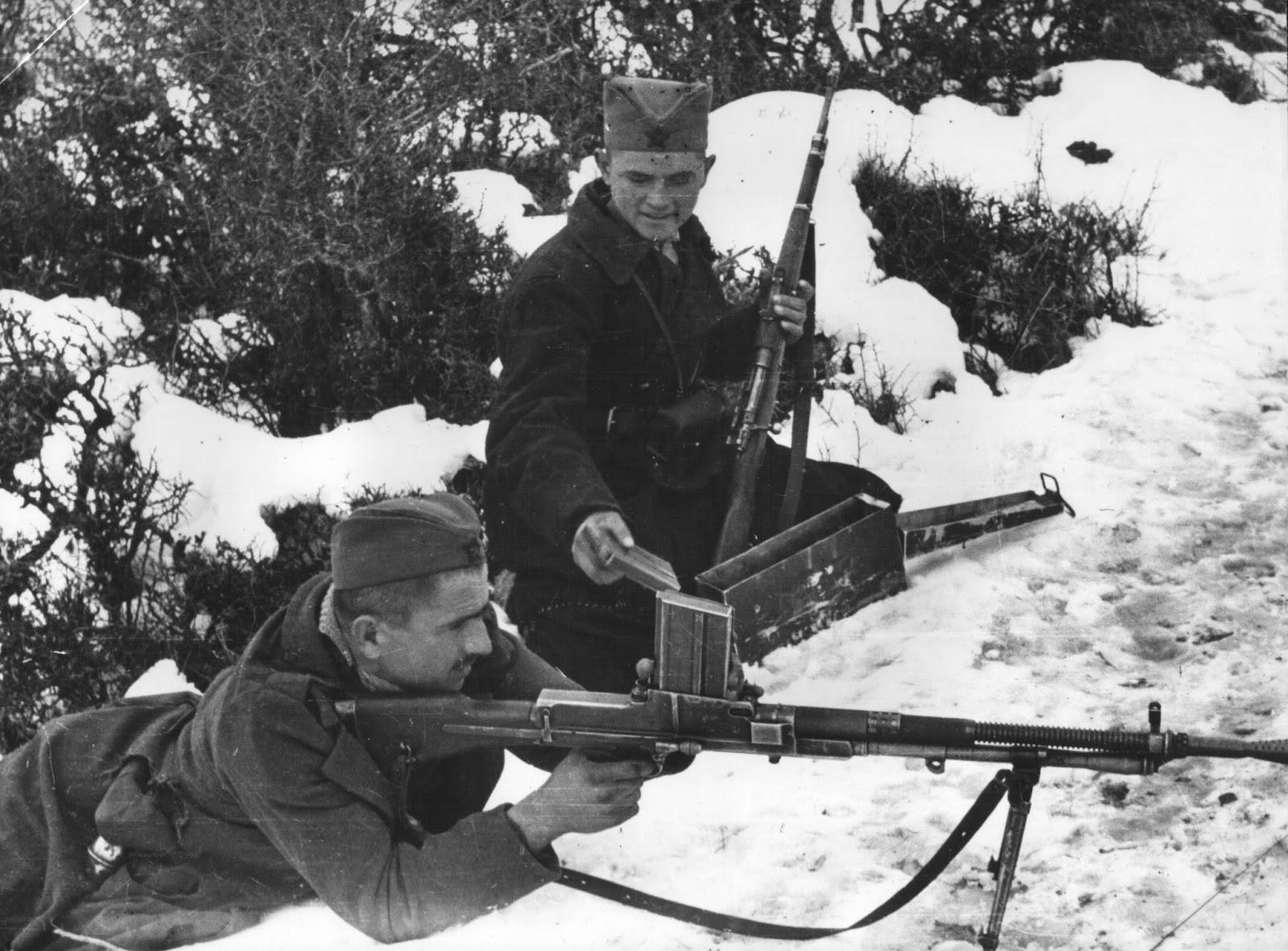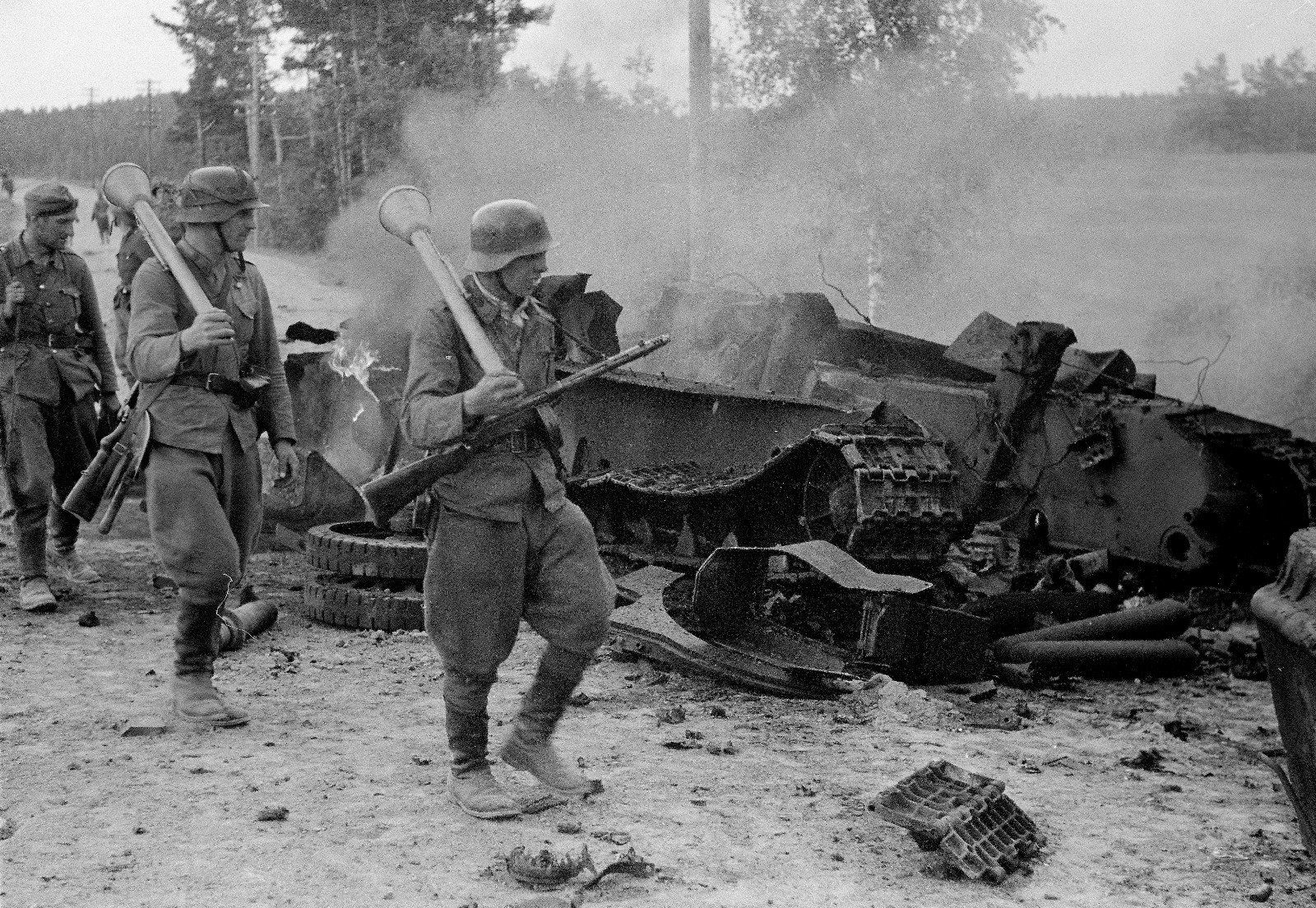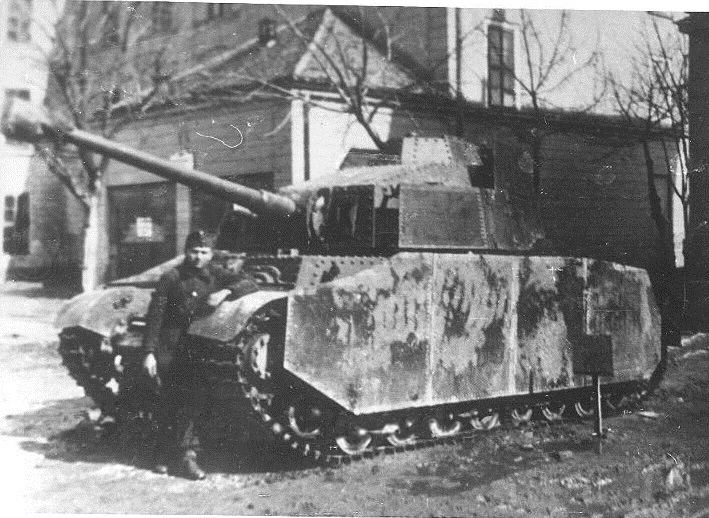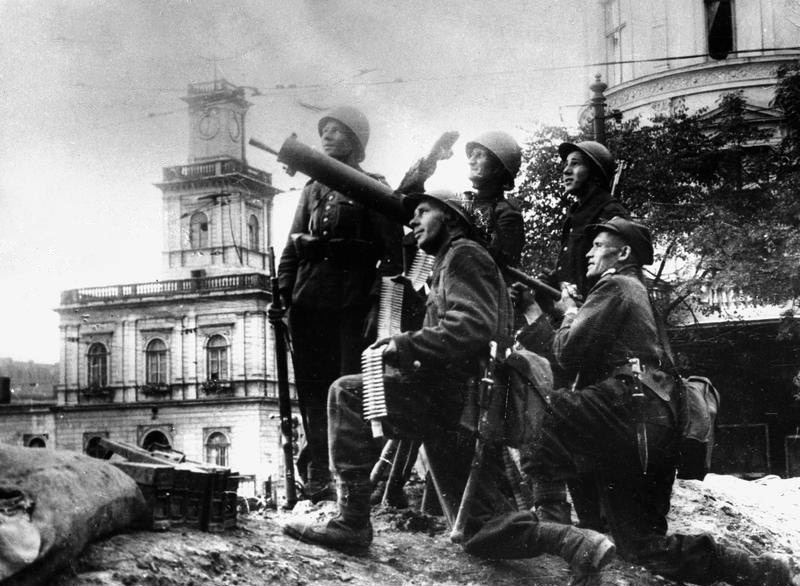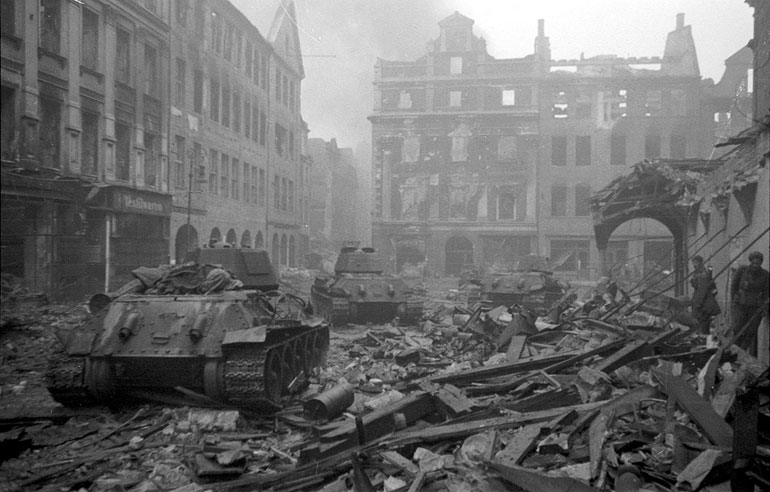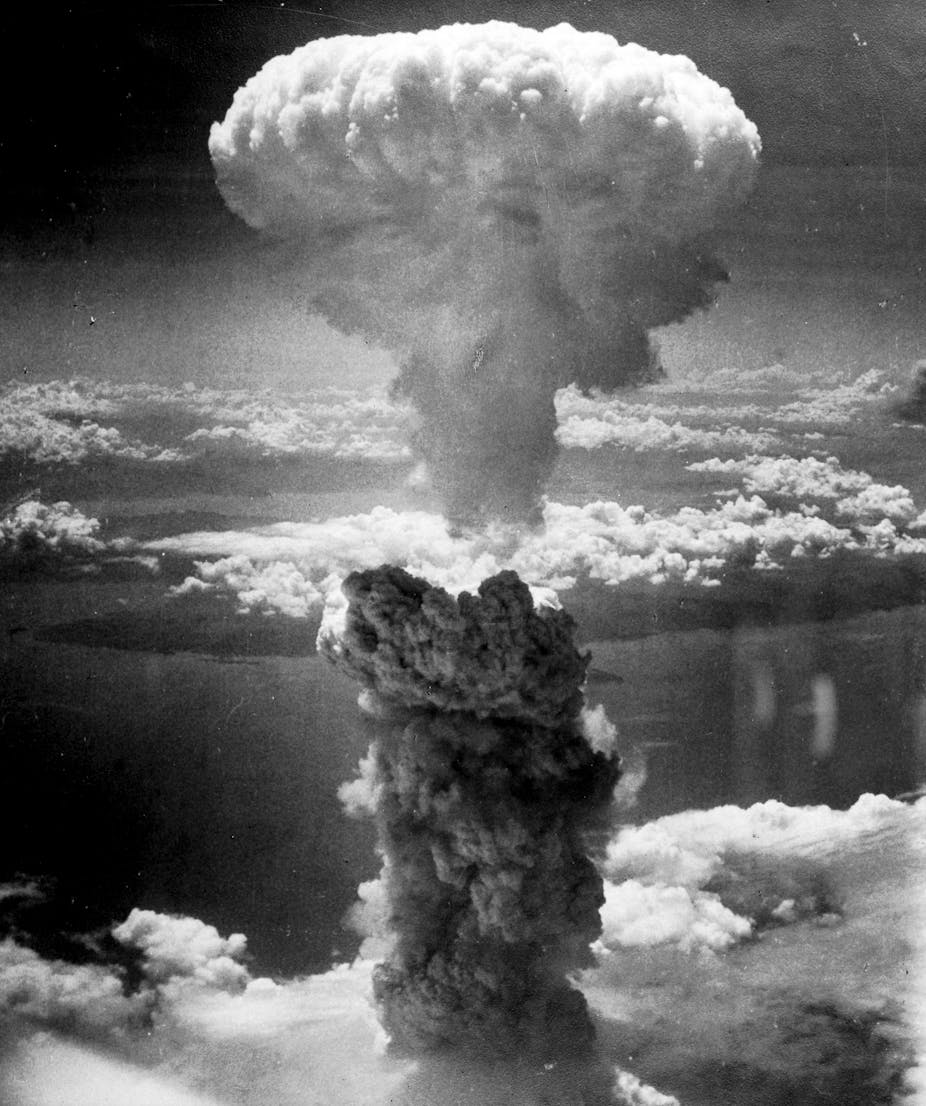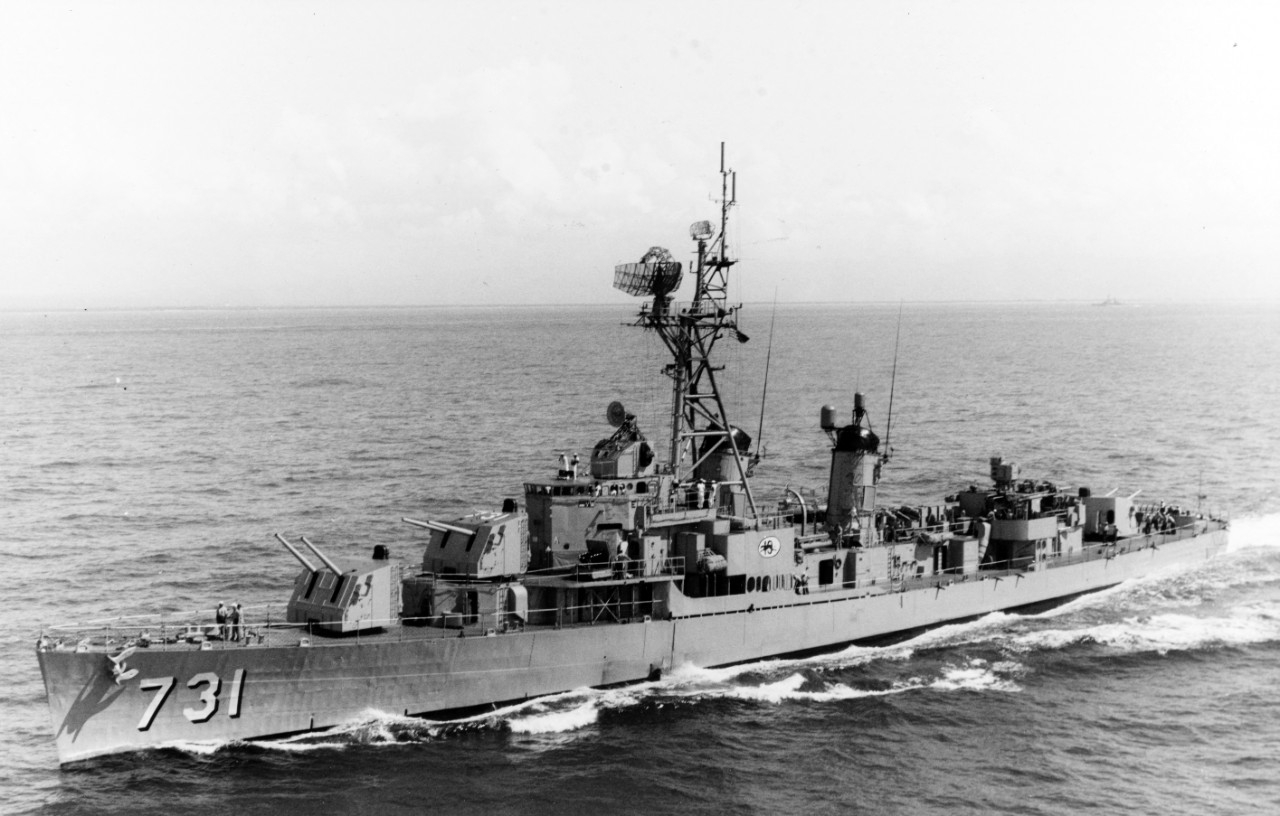The Battle of Greenland
A photo of Union troops offloading from a troopship at the port of Nuuk, circa 1942.
British soldiers landing at the town of Tasiilaq, circa 1942.
Following the British takeover of the Danish colonies of the Faroe Islands and Iceland, the US High Command were concerned that the British will certainly try and take the Danish colony of Greenland, which they fear that the British would use as a base to attack Union warships off the coast of Labrador and potentially try to invade Union controlled Canada. In early May of 1942, the Union Naval High Command under Earnest J. King would devise Operation North Star, which was a plan for the Union Military to move in and to occupy Greenland in order to prevent a potential British occupation, but it was also to put pressure on the British Garrison on Iceland. The operation called for the initial forces to be comprised of elements two U.S. Army Infantry divisions, a Marine division, a detachment of the US Navy Seabees (who were to build important infrastructure on Greenland), and also a Paratroop brigade. The ad hoc Naval Unit that was formed to transport them there was Task Force 43 which was commanded by Rear Admiral Daniel J. Callaghan. TF 43 would consist of Callaghan's flagship, the
USS San Francisco, the light cruisers
USS Duluth, Helena, and
Marblehead, 12 destroyers, 7 troopships, and three LSTs. As for the ground forces, most of them were pulled from the garrisons of the territories of Labrador and Newfoundland, with them being backed with some 75mm pack howitzers, an anti-aircraft detachment with 10 40mm AA guns, and 6 M2A4 light barrels. As for the paratroops, the plan was is that they were to dropped into Greenland by C46 Commando transports days before the arrival of the Task Force 43. Around the same time as the Union forces were forming their plan, the British were also putting together their operation in Greenland, which was codenamed as Operation Doomsday. Their landing force consisted of the heavy cruisers
HMS York and
HMS Dorsetshire, the light cruisers
Arethusa,
Orion,
Oxford, and
Dido, 10 destroyers, and 9 troopships. The landing force had two regular Infantry battalions, elements of the Grenadier Guards, No. 4 Commando, and elements of the Royal Marines alongside an Anti-Aircraft company and some Royal Engineers for support.
USS Duluth (CL-60) preparing to set sail with TF 43 from Cartwright Naval Base in Labrador to Greenland, circa May of 1942.
On May 24th, 1942, Task Force 43 would set sail from Cartwright to land the ground troops on Greenland, at the same time, the aircraft that were to transport the paratroops had took off from their airbases in Labrador. However there only 6 C46 Commandos available for their disposal, and so the remainder of the paratroops either arrived aboard C47s or on C79s (which were Ju-52s in Union service.) The latter aircraft had ran out of fuel when they had reached the Greenland coast, and so had to crash land.
A photograph of several Union paratroopers on the outskirts of Nanortalik after landing, note a C79 in the background preparing to crash land.
The day after the first Union forces landed in Greenland, the British forces unit Force L had arrived in Greenland, first landing at Tasiilaq on the 24th, then at Prins Christianssund on the 25th, and a detachment of the Royal Marines with the destroyer
HMS Isis had attempted at landing at Nanortalik on the same day. But were driven off by the Union paratroops and local militia, and a day later, the elements of Task Force 43 had reached that village, dropping an engineer detachment with an infantry company. On that same day, the main force would arrive on the western coast of Greenland, notably offloading troops at Nuuk and Paamiut. With a few weeks, several clashes between the British and the allied Union-Danish forces had occured, notably at Ikeq Island, where the 5th Marine Company clashed with No. 4 Commando, which the resulting firefight had left 8 Union and 9 British dead.
The aftermath of a skirmish that occurred on July 16th, 1942, which the British would defeat a US Army platoon at the settlement of Tasiusaq. Which they had killed 14 men and captured the rest while only suffering 16 dead and 11 wounded.
A postwar war painting about the Raid on Nanortalik, which had occurred on September 11th, 1942. The raid was conducted by the Royal Navy as an attempt to capture the Union base, which saw the British sinking two destroyers and four cargo ships while damaging the cruisers Los Angeles (which a shell from the HMS Dido had killed Admiral Callaghan) and Helena and another destroyer, in return, the British would only loose the destroyer HMS Kelly.
The Battle of Greenland would last until August of 1943 when the Union Forces captured the settlement of Tasiilaq from the British after a week long siege. This battle would see the loss of 1,632 men dead, 2,201 wounded, and 104 missing for the Union along with 1 aircraft carrier, 1 cruiser, 7 destroyers, 2 troopships, and 7 cargo ships sunk, 19 fighters, 15 cargo planes, and 25 bombers lost. The British would have 2,122 men killed, 2,891 wounded, and 82 missing along with 5 cruisers, 5 destroyers, 3 cargo ships, a submarine, and 19 fighters and 12 bombers shot down. Though this campaign has been badly overlooked by other battles during the war, none the less, this would be the only time other than the Battles of Bermuda, where the Union troops had come face to face with British soldiers during the Second Great War.
